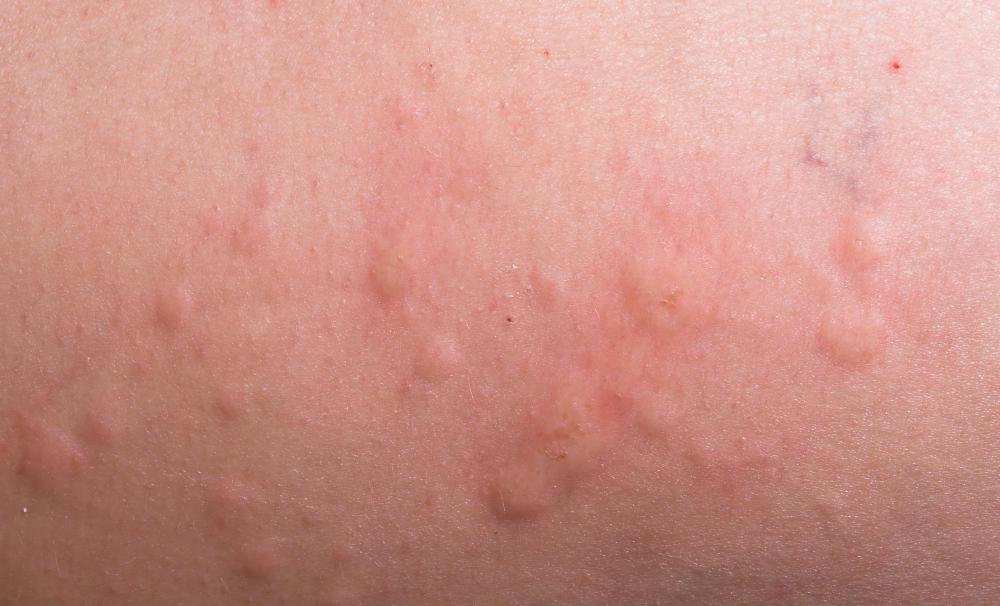At WiseGEEK, we're committed to delivering accurate, trustworthy information. Our expert-authored content is rigorously fact-checked and sourced from credible authorities. Discover how we uphold the highest standards in providing you with reliable knowledge.
What Is Acrodermatitis Chronica Atrophicans?
Acrodermatitis chronica atrophicans (ACA) is a skin condition during the latter stages of Lyme disease, or Lyme borreliosis, which is caused by the infectious organism called Borrelia burgdorferi or Borrelia afzelii. In acrodermatitis chronica atrophicans, the skin gradually undergoes atrophy, a reduction in size due to a decrease in both cell size and number. This disease, which is also called Herxheimer disease or primary diffuse atrophy, has an early inflammatory stage, wherein there is diffused or localized redness or bluish-red discoloration, and swelling of the skin may be observed. As it spreads, the extensor and joint surfaces of the extremities become involved. The spreading nature of the skin lesions is the reason why they are called erythema migrans.
During the late stage of acrodermatitis chronica atrophicans, there is marked fibrosis, sclerosis, and atrophy. As a result, the skin becomes prominently wrinkled and loose, causing hair loss. Some people may find prominent sclerotic patches and fibrotic bands over the tibia or ulna, which are called pretibial bands and ulnar bands, respectively. ACA has been known to cause problems in the peripheral nervous system, such as allodynia, the experience of pain with normal non-painful stimuli. Other people experience persistent or intermittent pain in their extremities, and these problems are classified as peripheral neuropathies.

To diagnose acrodermatitis chronica atrophicans, a confirmation of the presence of skin lesions and tissue paper-like skin, together with serologic testing and skin biopsy, is required. Blood extraction is needed to determine the serum immunoglobulin G (IgG) level, which is elevated most of the time. Biopsy of the early ACA skin lesions shows the presence of inflammatory cells in the dermis together with lymphocytes and plasma cells, a loss of the rete ridges, and a reduction of elastic fibers as well as cell size and number. Dilation, or enlargement of blood vessels, and formation of vacuoles that resemble fat cells may occur. There is also fibrosis, signified by an increased number of collagen-producing cells called fibroblasts, collagen bundles, and sclerosis, or the formation of thick collagen bundles.

Acrodermatitis chronica atrophicans is best treated in its early inflammatory stage. The agent is an infectious spirochete, so the primary treatment of this condition includes either doxycycline or penicillin for four weeks. When acrodermatitis chronica atrophicans is caught in its late stage, it may be difficult to reverse the atrophy and the limitation of movements of the upper and lower extremities. Aside from antibiotic treatment, people with chronic atrophy should undergo rehabilitation therapy.
AS FEATURED ON:
AS FEATURED ON:













Discuss this Article
Post your comments